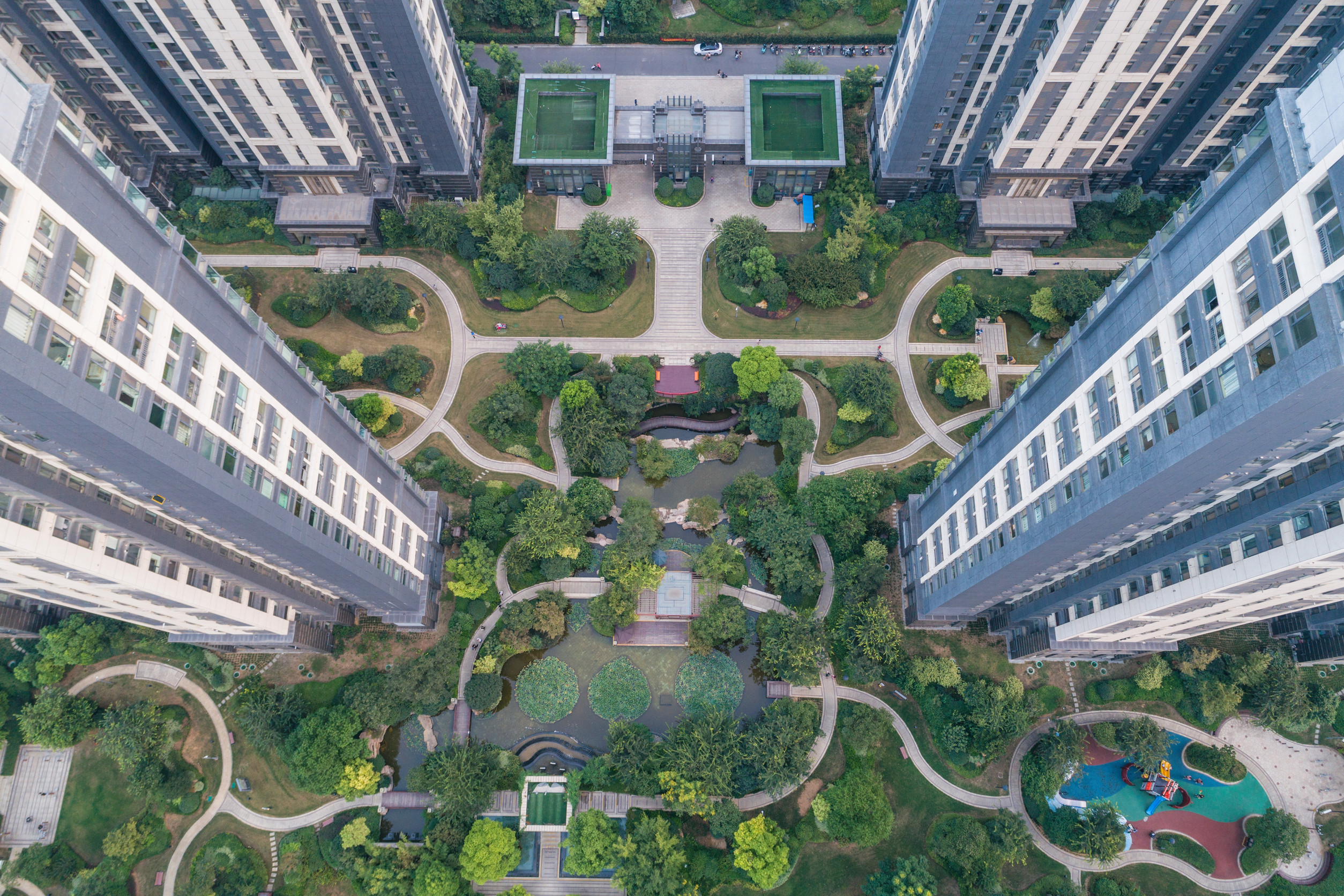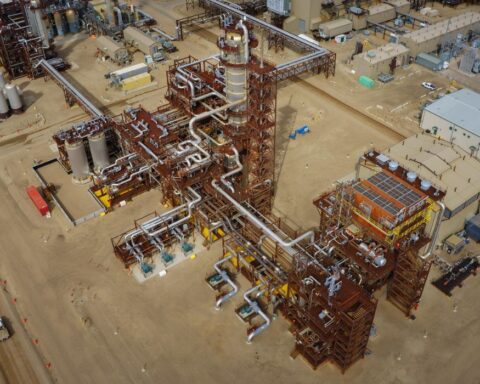At some point this year, a Quebec-based factory will begin producing a product that will fly under the radar of most new year’s trend forecasts: a form of drywall with 60% less embodied carbon emissions than the conventional form, marking a first in North America. Drywall is a bit of a wallflower, so to speak, but it’s also one of the most abundant building materials on the market – and it’s in high demand at a time when governments are scrambling to build more housing in a hurry.
The plant – operated by CertainTeed Canada, a division of the French construction giant Saint-Gobain – will transition from the use of fossil fuels to clean power provided by Hydro-Québec and increase its use of recycled materials to cut its reliance on incoming shipments of virgin gypsum.
Such carbon-reduction initiatives are becoming increasingly common among industrial operators, data-centre developers and electrical utilities, all of which are pushing to find efficiencies to cut their emissions in response to regulatory, consumer and investor pressure. Cities, countries and corporations are looking for ways to get ahead of the climate crisis, with a range of measures driving green trends behind the scenes.
Herewith, Corporate Knights’ annual survey of important trends for 2025:
More cities will be designing for extreme heat
The summer of 2024 was the hottest on record, and there’s every reason to expect more of the same this year, with similar results. A growing number of urban regions that now endure extended periods of extreme temperatures are looking at responding more proactively to deadly heat waves. As Corporate Knights reported last year, several city regions have appointed “chief heat officers” to spearhead a range of measures, from public health initiatives to safety practices for firms with outdoor employees, and many more municipally driven extreme-heat strategies will roll out 2025.
Indeed, planners, designers, landscape architects and municipal governments are stepping up their efforts to alter or adapt the built forms in cities in 2025 to mitigate the urban heat-island effect. From the construction of shade structures in public spaces to the use of light-coloured exteriors on buildings and white paint on paved surfaces, expect to see more of them in urban centres around the world. Many cities are also adopting more aggressive approaches to tree planting on streets, along bike paths and in parks, creating more green corridors and replacing hard impervious surfaces.
More new builds will also have fewer staircases. Some North American jurisdictions (British Columbia and Washington State, among others) are easing up on fire codes to allow single-stair apartment buildings, which are commonplace in much of the world. This reform provides a range of benefits, not least of which is cross-ventilation within individual apartments, reducing the need for air conditioning.
Power-hungry data centres face a reckoning
The Canadian government’s decision, late in 2024, to incentivize major pension plans to invest up to $15 billion in “green” data centres is the latest piece of evidence about the growing recognition of artificial intelligence’s heavy carbon footprint. The program is aimed at encouraging data-centre developers and tech giants to use low-carbon electricity to power the huge amount of cooling required to allow these vast server farms to operate safely.
There have been several recent developments on this front, including Microsoft’s move, announced in September, to purchase 20 years of electricity from a refurbished reactor at Three Mile Island. “The agreement is intended to provide the company with a clean source of energy as power-hungry data centres for artificial intelligence (AI) expand,” the BBC reported.
Other developers are anticipating the arrival of small nuclear reactors as a means of providing low-carbon electricity, although these modular plants are still 10 to 15 years from coming online.
As data centres pop up in urban areas, some architects and critics have called out the monolithic and dehumanizing design of these “anti-monuments,” while data-centre developers are looking to reduce embodied carbon, using modular construction techniques and even employing green materials like cross-laminated timber.
Such changes reflect the data-centre industry’s awareness that increasingly stringent regulation is on the way. Starting in fall 2024, the European Union is targeting data centres with tougher regulations, including the disclosure of energy and water consumption. Other jurisdictions, including Australia, Singapore and a growing number of U.S. state governments, are following suit with their own regulations.
Giant ‘grid’ batteries are making renewables more viable
As wind and solar installations account for an ever-larger supply of renewable electricity, some utilities and systems operators have realized they need to figure out how to make better use of these low-cost/low-carbon sources. Systems operators for decades stored power behind hydro dams, using the renewable electricity to pump water up into reservoirs.
But in recent years, so-called long-duration energy storage (LDES) has become an increasingly viable low-carbon alternative. Citing International Energy Agency forecasts, The Economist reported in November that grid storage has become the fastest-growing energy technology, with 80 gigawatts forecast to be added in 2025, three times the level achieved in 2021. (For comparison, Canada has electricity capacity of 149 GW nationwide.)
The idea behind grid storage is to create what are effectively giant banks of batteries that can be recharged with renewable power when the wind blows and the sun shines. These batteries can then be discharged over the course of eight or 12 hours, thereby providing backup low-carbon power to the grid at scale.
China has the world’s largest supply of grid-storage capacity, but other jurisdictions will be racing to catch up over the next decade.
In the United States, California leads the pack, announcing the procurement last year of two gigawatts of 12- to 24-hour LDES, to be built out in the 2030s. Which is critical, since California requires solar and energy storage in new homes.
Elsewhere, Australian authorities are also commissioning several LDES projects, typically providing hundreds of megawatts of capacity using various technologies, including a 200-megawatt compressed air system with eight hours of capacity, developed by Toronto-based Hydrostor.
Tariffs will help fight climate change
At a period when the incoming Trump administration has threatened large-scale tariffs as a means of driving investment into the United States, the European Union’s carbon border tax, or “carbon border adjustment mechanism” (CBAM), adopted in 2023, will become a hot topic of diplomatic debate as the 27-nation bloc spends this year preparing for the launch in 2026.
An EU innovation, CBAMs are essentially carbon levies on imported goods and commodities, designed to mitigate against carbon “leakage,” or the problem of importers in high-regulation regions bringing in materials from countries with lax carbon policies. A few jurisdictions, such as Brazil and the United Kingdom, have followed suit, while the Canadian government is considering its own version, although, like so many trade-related files, this one is up in the air.
Not surprisingly, this policy approach received a good deal of pushback last year from Brazilian and Indian steelmakers. It seems likely that the chorus of objections will grow louder this year as EU member states ramp up their CBAM regulations.
Either way, CBAM will play a key role in 2025 in aligning trade policy with the broader climate targets.
Given the anticipated political headwinds facing climate policy, 2025 may be the year in which rapidly maturing climate technologies and resiliency solutions will be called upon to prove their own significance in combating extreme weather and intensified stresses on our energy systems.
John Lorinc is a Toronto journalist, author and editor. He writes about cities, climate and cleantech.







